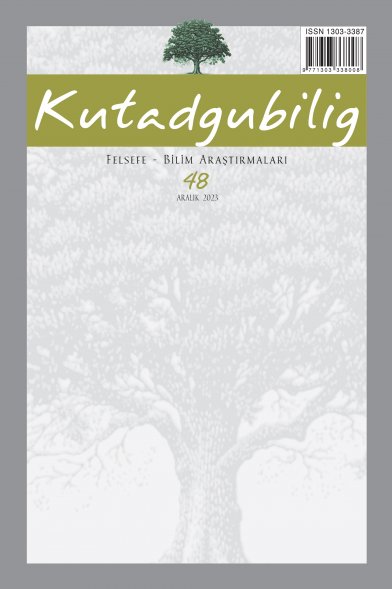In the pursuit of longcheng in asian huns
In the pursuit of longcheng in asian huns
This article is an attempt to search for the meaning and the place of Longcheng, an ancient Xiongnu settlement. It was written in the Chinese dynastic histories that the Xiongnu had been gathering in the Longcheng during the fifth month. Most of the researchers translated the word Longcheng as Dragon City. Thus, most of the researches assume an existence of a dragon cult among the Xiongnu. This meaning is discussed in the article by translating all the records related to the Longcheng in Shiji, Hanshu and Hou Hanshu. It is expressed in the article that the meaning of Dragon City for the Longcheng is not certain. Besides, the existence of a dragon cult among Xiongnu is also discussed in the article. Finally, the place of the Longcheng is tried to be identified.
___
- Baykuzu, Tilla Deniz; Asya Hun İmparatorluğu, Konya: Kömen Yayınları, 2012.
- Çin Tarih Atlası (中国歷史地圖集), Şanghay: Zhongguo Ditu Chubanshi, 1982.
- Di Cosmo, Nicola; Ancient China and Its Enemies: The Rise of Nomadic Power in East Asia, Cambridge: Cambridge University Press, 2002.
- Ercilasun, Konuralp; Bozkırda Hâkimiyet Merkezi Hakkında Bazı Görüşler, Türk Kültürünün Evreleri: Başlangıç ve Yazıtlar Çağı Uluslar arası Konferansında sunulmuş bildiri. Ercilasun, Konuralp; Hunlarla Çinliler Arasında Kültür İlişkileri, Mimar Sinan Üniversitesi Türk-Çin Kültür İlişkileri Bilgi Şöleni 2012, İstanbul (baskıda).
- Esin, Emel; İslâmiyetten Önceki Türk Kültür Tarihi ve İslâma Giriş, İstanbul: Edebiyat Fakültesi Matbaası, 1978.
- Geçmişten Günümüze Çin Kişi Adları Sözlüğü (中國古今人名大辭典), Taipei: Tai-wan Şang-wu Yin-shu-kuan, 1990.
- Geçmişten Günümüze Çin Yer Adları Sözlüğü (中國古今地名大辭典), Taipei: Tai-wan Şangwu Yin-shu-kuan, 1993.
- Han Şu. Ban Gu, (1997), Han Şu (Han Kitabı), Pekin: Zhonghua Shuju Baskısı.
- Hou Han Şu. Fan Ye, (1997), Hou Han Şu (Sonraki Han Kitabı), Pekin: Zhonghua Shuju Baskısı.
- McGovern, William Montgomery; The Early Empires of Central Asia, Chapel Hill, N.C.: The University of North Carolina Press, 1939.
- Onat, Ayşe, Sema Orsoy ve Konuralp Ercilasun; Han Hanedanlığı Tarihi Hsiung-nu (Hun) Monografisi, Ankara: Türk Tarih Kurumu, 2004.
- Onat, Ayşe; Güney Hunları, A.Ü. D.T.C.F. Genel Türk Tarihi Kürsüsü Doktora Tezi, 1972.
- Ögel, Bahaeddin; Türk Mitolojisi I, Ankara: Türk Tarih Kurumu, 1971.
- Pulleyblank, E. G.; The Consonantal System of Old Chinese Part II, Asia Major 9/2 (1962), s. 209-265.
- Purcell, David ve Kimberly Spurr; Archaeological Investigations of Xiongnu Sites in the Tamir River Valley, The Silk Road 4/1 (Summer 2006), s. 20-32.
- Şı Ci. Sı-ma Çien (1997), Şı Ci (Tarihî Kayıtlar), Pekin: Zhonghua Shuju Baskısı.
- Wang Wey-mao, Hunların Long-çıngı Hakkında Araştırma (匈奴龙城考辨), Lishi Yenjiu 1983/2, s. 142-144.
- ISSN: 1303-3387
- Yayın Aralığı: Yılda 2 Sayı
- Başlangıç: 2002
- Yayıncı: Dergah Yayınları A.Ş.
Sayıdaki Diğer Makaleler
Bourdıeu'nün politik alan kavramı ile politik felsefenin ilişkisi
İbn Sînâ'nın varlık düşüncesinde faal akıl ve ona yöneltilen eleştiriler
Cicero'nun de re publica'sındaki krallık dönemi anlatımının analizi
In the pursuit of longcheng in asian huns
Ludwıg andreas feuerbach'ın yeni felsefe si ve din eleştirisi
Nurettin Topçu'nun bergson'la ilgili doçentlik tezi hakkında bilgiler ve vesikalar
